
How to use Zoom byE. Kelly Watson-Collins
- Subject:
- Electronic Technology
- Material Type:
- Interactive
- Author:
- E. Kelly Watson-Collins
- Date Added:
- 04/17/2022

How to use Zoom byE. Kelly Watson-Collins

Human Supervisory Control of Automated Systems discusses elements of the interactions between humans and machines. These elements include: assignment of roles and authority; tradeoffs between human control and human monitoring; and human intervention in automatic processes. Further topics comprise: performance, optimization and social implications of the system; enhanced human interfaces; decision aiding; and automated alterting systems. Topics refer to applications in aerospace, industrial and transportation systems.

learning about packaging for IC semiconductor from the die form until complete
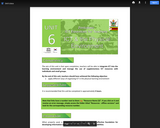
The aim of this unit is that upon completion, teachers will be able to integrate ICT into the learning environment and manage the use of supplementary ICT resources with individuals and small groups.
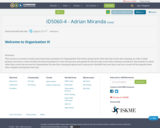
This resource is meant to help newly hired team members for Organization X be better prepared for their first day of new hire training. In order to help prepare new hires, a short module has been developed to cover the process and agenda for the first day of new hire training. Included in this module is a short video that covers the process for Organization X's new hire training program and a interactive checklist that new hires can use to mark off the agenda items they complete during their first day.

In the following lesson plan we will find different moments to develop during a 2-hour English class in grade 11 where the thematic focus will be "the diseases caused by the excessive use of technology". The lesson plan is divided into 3 moments:First, the pre activity will focus on providing our students with icebreaker activities and an introduction to the topic to be covered. The while activity will present 2 didactic activities to put into practice the content and information learned.The post activity will be an activity for students to develop their speaking skills.And lastly, the assessment, where students will be evaluated on what they have learned throughout the class.
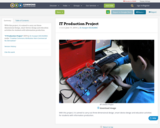
With this project, it is aimed to carry out three-dimensional design, smart device design and education activities for students with information production.

Students examine how the power output of a photovoltaic (PV) solar panel is affected by temperature changes. Using a 100-watt lamp and a small PV panel connected to a digital multimeter, teams vary the temperature of the panel and record the resulting voltage output. They plot the panel's power output and calculate the panel's temperature coefficient.

This course provides a broad theoretical basis for system identification, estimation, and learning. Students will study least squares estimation and its convergence properties, Kalman filters, noise dynamics and system representation, function approximation theory, neural nets, radial basis functions, wavelets, Volterra expansions, informative data sets, persistent excitation, asymptotic variance, central limit theorems, model structure selection, system order estimate, maximum likelihood, unbiased estimates, Cramer-Rao lower bound, Kullback-Leibler information distance, Akaike’s information criterion, experiment design, and model validation.

This class investigates cognitive science and technology as it is applied to the industrial design process. The class introduces prototyping techniques and approaches for objective evaluation as part of the design process. Students practice evaluating products with mechanical and electronic aspects. Evaluation processes are applied to creating functioning smart product prototypes. This is a project oriented subject that draws upon engineering, aesthetic, and creative skills. It is geared toward students interested in creating physical products which encompass electronics and computers, aimed at including them in smart scenarios. Students in the class will present readings, learn prototyping skills, create a product prototype, and complete a publication style paper.

Information Technology I helps students understand technical concepts underlying current and future developments in information technology. There will be a special emphasis on networks and distributed computing. Students will also gain some hands-on exposure to powerful, high-level tools for making computers do amazing things, without the need for conventional programming languages. Since 15.564 is an introductory course, no knowledge of how computers work or are programmed is assumed.

6.441 offers an introduction to the quantitative theory of information and its applications to reliable, efficient communication systems. Topics include mathematical definition and properties of information, source coding theorem, lossless compression of data, optimal lossless coding, noisy communication channels, channel coding theorem, the source channel separation theorem, multiple access channels, broadcast channels, Gaussian noise, and time-varying channels.

This is a discussion-based, interactive seminar on the development of information and communication technology in Sub-Saharan Africa. The students will seek to understand the issues surrounding designing and instituting policy, and explore the possible ways in which they can make an impact on information and communication technology in Africa.

This course explores the ultimate limits to communication and computation, with an emphasis on the physical nature of information and information processing. Topics include: information and computation, digital signals, codes and compression, applications such as biological representations of information, logic circuits, computer architectures, and algorithmic information, noise, probability, error correction, reversible and irreversible operations, physics of computation, and quantum computation. The concept of entropy is applied to channel capacity and to the second law of thermodynamics.

6.720 examines the physics of microelectronic semiconductor devices for silicon integrated circuit applications. Topics covered include: semiconductor fundamentals, p-n junction, metal-oxide semiconductor structure, metal-semiconductor junction, MOS field-effect transistor, and bipolar junction transistor. The course emphasizes physical understanding of device operation through energy band diagrams and short-channel MOSFET device design. Issues in modern device scaling are also outlined. The course is worth 2 Engineering Design Points.
Acknowledgments
Prof. Jesús del Alamo would like to thank Prof. Harry Tuller for his support of and help in teaching the course.

The strategic importance of information technology is now widely accepted. It has also become increasingly clear that the identification of strategic applications alone does not result in success for an organization. A careful coordination of strategic applications, information technologies, and organizational structures must be made to attain success. This course addresses strategic, technological, and organizational connectivity issues to support effective and meaningful integration of information and systems. This course is especially relevant to those who wish to effectively exploit information technology and create new business processes and opportunities.

This course is based on the work of the MIT-African Internet Technology Initiative (MIT-AITI). MIT-AITI is an innovative approach by MIT students to integrate computers and internet technology into the education of students in African schools. The program focuses upon programming principles, cutting-edge internet technology, free open-source systems, and even an entrepreneurship seminar to introduce students in Africa to the power of information technology in today’s world.
MIT-AITI achieves this goal by sending MIT students to three African nations in order to teach both students and teachers through intensive classroom and lab sessions for six weeks. The AITI program is implemented with emphasis on classroom teaching, community-oriented projects, and independent learning.
This course has two major components:
Content from a spring 2005 preparatory seminar offered by the MIT-AITI leadership. The goal of this seminar is to adequately prepare the AITI student teachers for their upcoming summer experiences in Africa.
A snapshot of the summer 2005 MIT-AITI program. This includes the Java®-based curriculum that MIT-AITI ambassadors teach in Africa each year, as well as content from an entrepreneurship seminar offered concurrently with the IT class.
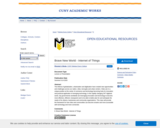
8. Brave New World - Internet of Things
The trifecta of globalization, urbanization and digitization have created new opportunities and challenges across our nation, cities, boroughs and urban centers. Cities are in a unique position at the center of commerce and technology becoming hubs for innovation and practical application of emerging technology. In this rapidly changing 24/7 digitized world, city governments worldwide are leveraging innovation and technology to become more effective, efficient, transparent and to be able to better plan for and anticipate the needs of its citizens, businesses and community organizations. This class will provide the framework for how cities and communities can become smarter and more accessible with technology and more connected.
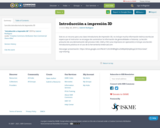
Lección introductoria de impresión 3D

The Foundations of Applied AI course is an introductory exploration into the world of artificial intelligence (AI), designed for undergraduates with no prior experience in AI. This online, 3-credit course offers a deep dive into AI's core concepts, applications, and the ethical implications of deploying AI technologies across various industries. Through multimedia lectures, case studies, and hands-on projects, students will gain a comprehensive understanding of how AI can transform business, healthcare, and more, while also navigating the ethical considerations vital for responsible AI use.By the end of the course, students will be equipped to identify AI opportunities, understand AI's potential impacts, and discuss the importance of ethical frameworks in AI development. This course lays the groundwork for a future in AI, preparing students for further specialization or to apply AI insights in their fields.